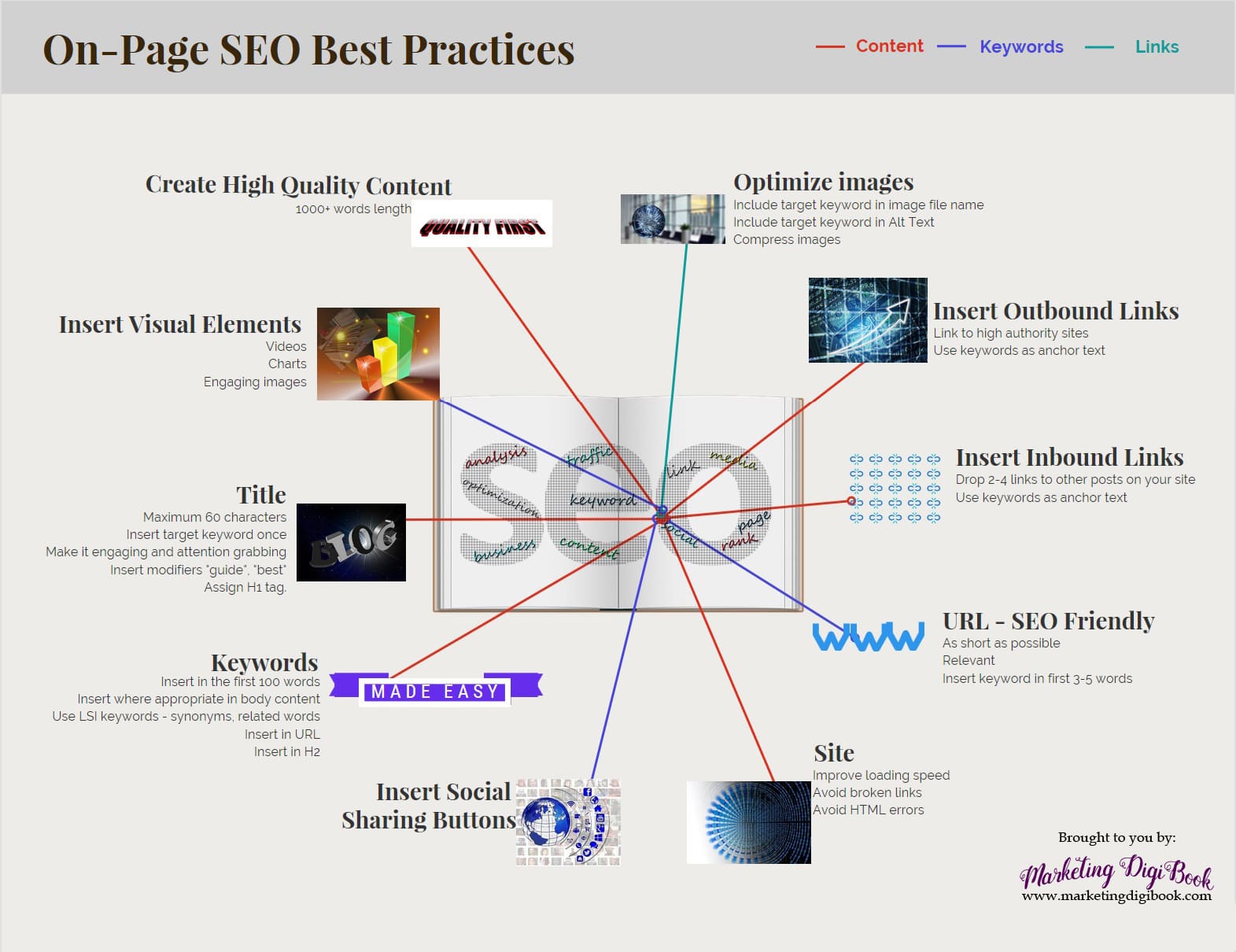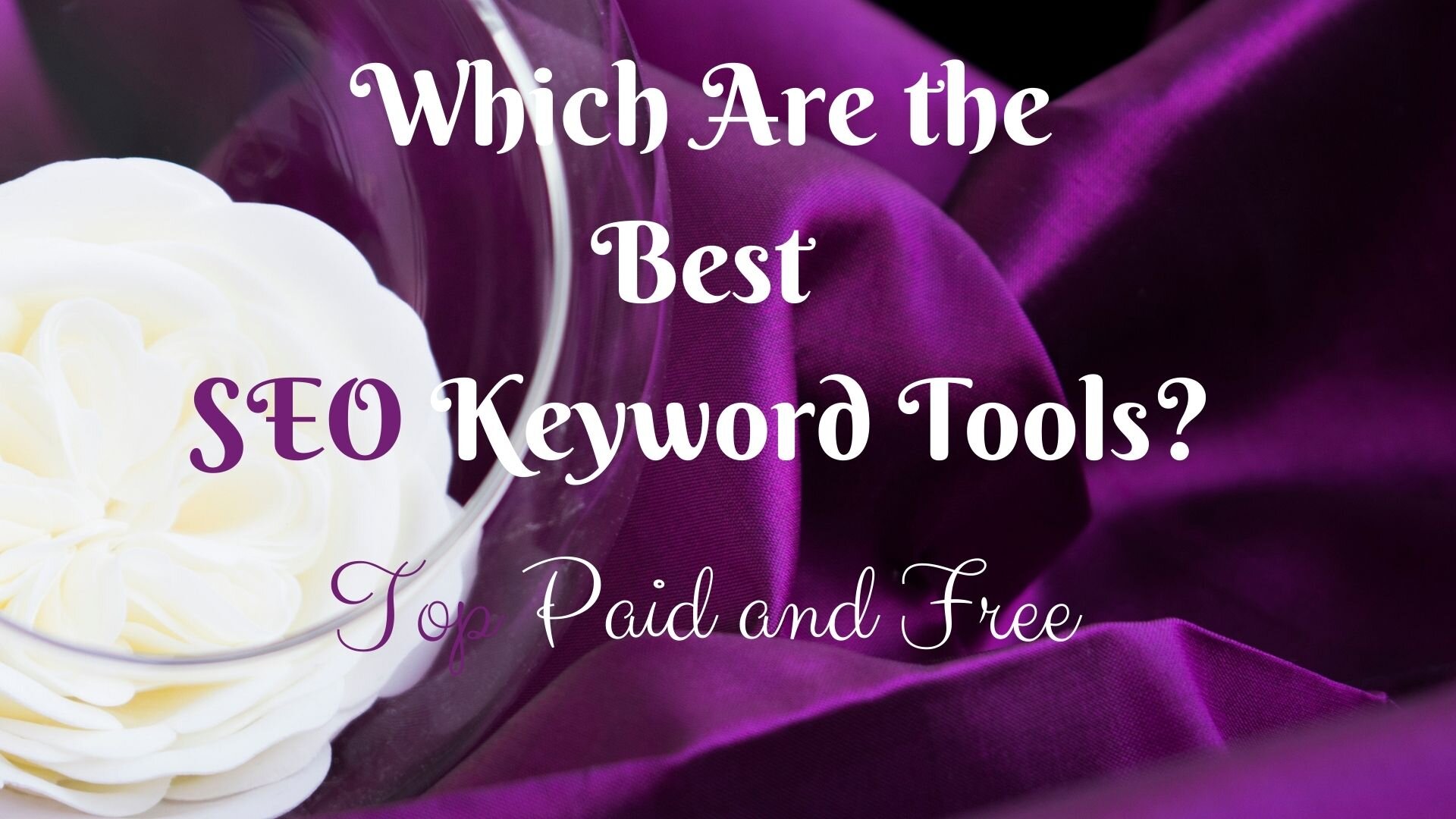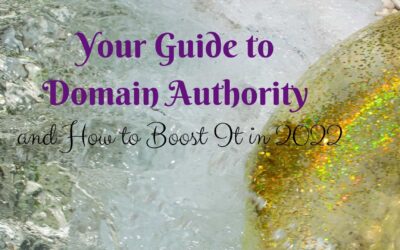Ranking the highest possible in search engine results is a fierce battle. An interminable ever-changing list of on-page SEO steps and off-page SEO factors impact these results.
The main purpose of on-page SEO techniques is to naturally optimize a piece of content for search engines, in such a manner that it is easily found and listed in front of targeted visitors.
Here is a list of on-page SEO techniques that everyone should use to boost rankings:
Let’s Make Your SEO & Content Work Better for Your Business
1. The Title Should Include Your Target Keyword
Most experts consider that the title of the post is the most important on-page SEO factor. Their argument is that if the title is not attractive and engaging enough to click through, or not optimized, the content will never appear in front of the user.
Others, like MOZ, consider the title tag as the second most important on-page SEO factor after content.
For best performances, your titles should follow the subsequent rules:
– Optimal length under 60 characters for proper display on the search results
– Use your keyword in the title once, out of the question to stuff a title just with keywords
– Keyword should be among the first words of the title, the first if possible.
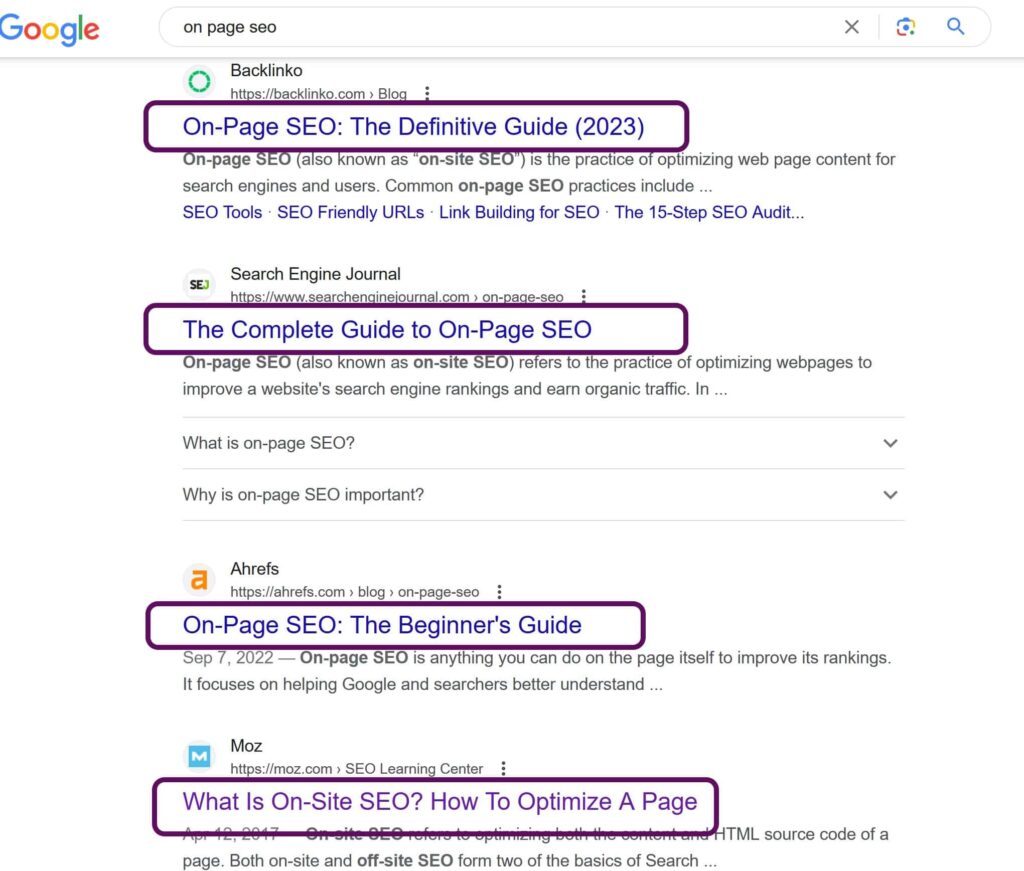
Whenever possible include modifiers in the title. Words such as 2023, “guide”, “best” help improve rankings for long tail keywords.
In my view, the title of your post is paramount in the hierarchy of on-page SEO steps. The headline will make or break the success of your post.
2. On page SEO Step 2: Assign H1 Tag to the Title of the Article
The H1 tag is very important for SEO, so verify if your CMS properly added it to your title.
H1 tag should be used only once on a page and include the target keyword.
3. High Quality 1000+ Words Content
There is a huge debate about what that high-quality content means. As a consequence there is a myriad of indirect methods that in a certain way can measure the quality of the content: the number of visitors, repeat visitors, time on site, shares, comments, etc.
Useless to say that unique content is the norm. Avoid publishing duplicate content, for example for a guest post, because you have real chances of getting penalized by search engines.
High-quality content is easy to digest and attractive as designed. Organize the content in short paragraphs, emphasize keywords with a bold format, and use bullets to break blocks of text.
Nowadays the trend is to write long-form content as it was established that it ranks higher and is perceived as providing more value. Writing 2000+ words or even 3000+ words posts becomes the standard.
4. On-Page SEO Step 4: Enrich your content with visuals
Besides high-quality content, formatting that content is of out-most importance. Insert charts, videos, and entertaining images to retain attention, increase time spent on that piece of content and shrink the bounce rate.
Visuals improve the quality of content, making it more informative and attractive, thus boosting user interaction. Search engines highly appreciate that.

Visuals are the first vector of sales.
Use Professional Styled Stock Photography to Promote Your Business.
5. On-Page SEO Steps: Absolutely Include Images Optimization
Image name and image Alt Text should include target keywords. At least one of the images should include the keyword you run for. Again, this is a detail that helps search engines determine the subject of your post and it’s an on-page SEO technique that you should not ignore.
6. Insert Target Keyword within the First 100 Words
The first 100 words of your article should include the target keyword to help search engines identify the subject of your content.
Most probably this comes naturally, but just in case don’t skip it.
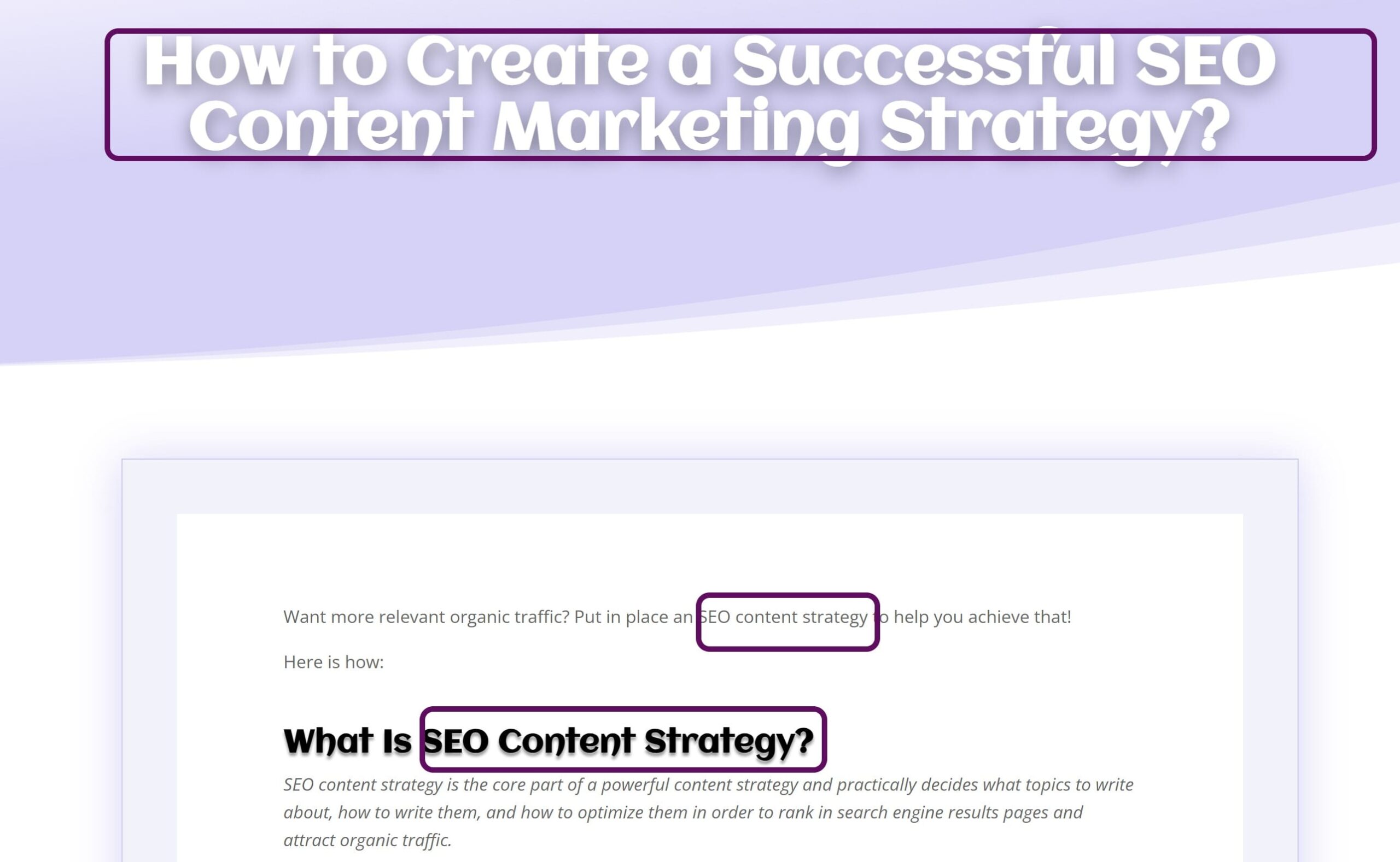
Concerning the keyword density in your post, there is no magic formula, but don’t overuse them, it’s subject to downgrading in search results. Use one keyword in the beginning and within the post where it makes sense, including semantic variations.
Here is what Matt Cutts from Google says relative to keywords density:
Source: YouTube
7. On-Page SEO Steps: Exploit the Power of Latent Semantic Indexing Keywords
Latent Semantic Indexing Keywords are related words or synonyms used by search engines to score the relevance of a page. Use a couple of them within your post.
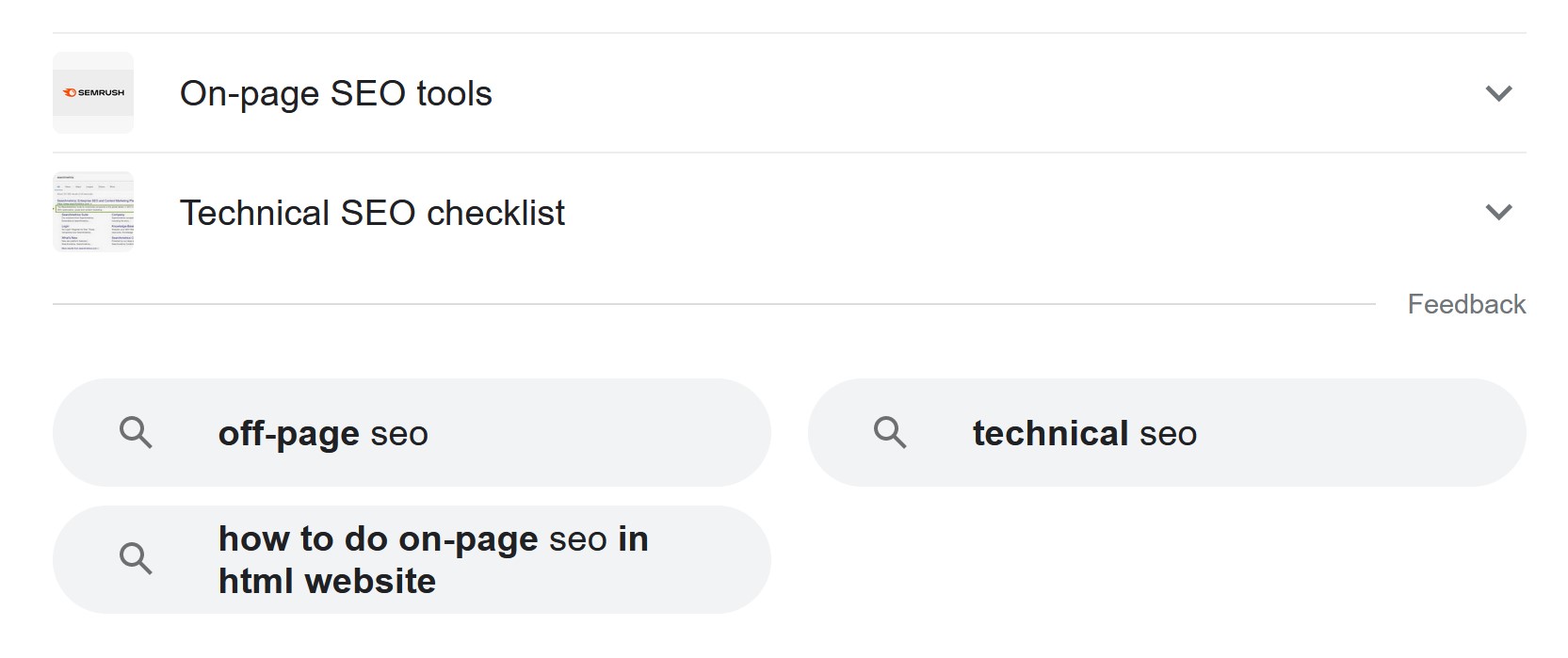
8. Assign H2 Tags to Subheadings
Subheadings should also have tags, H2, H3, H4. The target keyword is to be inserted in at least one subheading.
Like in the example below:
9. Updated Content
Search engines are more interested in fresh content. As such updating content, especially for time-sensitive content is decisive.
Google, for example, displays the date of the last update.
The dimensions of the modifications made to a certain post are important too, removing irrelevant parts, and adding more content surpass just changing a few words. Update your post frequently and boost your rankings.
10. Insert External Links in Your Content
This seems to be a common mistake in not using outbound links. But it is a simple, easy SEO strategy to increase traffic. Its major advantage is that improves the quality of your content and helps search engines establish the topic of the respective page. External Links do not miss any on-page SEO checklist 2023.
It’s important to pay attention to the sites you link to and aim for those with high authority. Renowned sites like Forbes.com or Entrepreneur.com, or major actors in your niche, like HubSpot.com for Inbound Marketing, are more than reliable and trustful, as they provide quality content that your readers will highly appreciate.
And even more, your site will gain credibility.
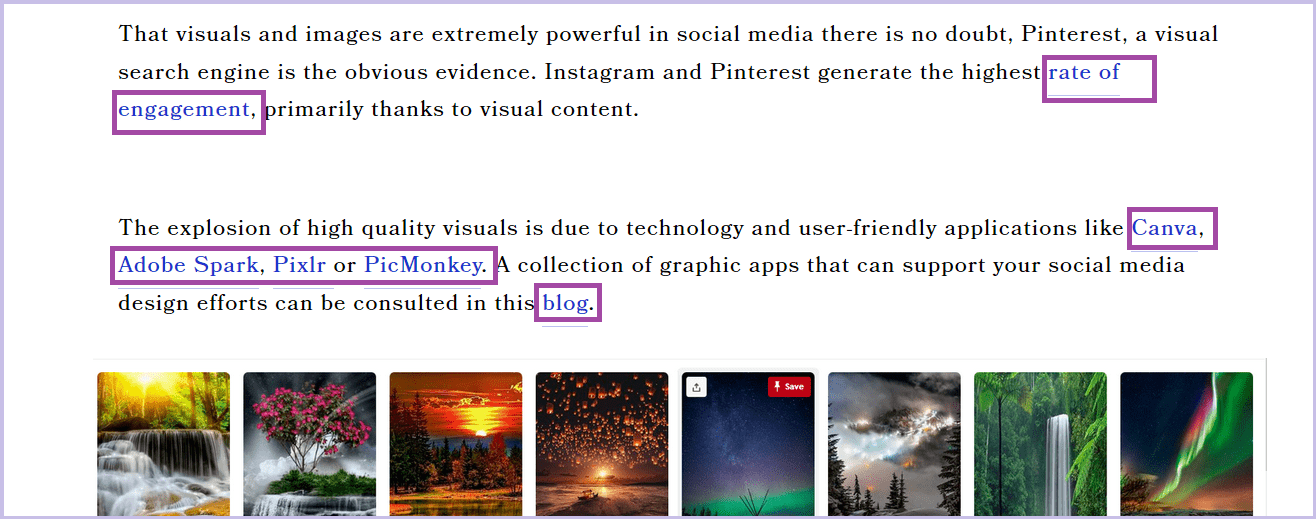
11. Insert Internal Links in Your Content
If external links are very important, inbound links are also important. Interlinking is a strategy to keep the reader more time on your site while passing from one page to another. Inbound links prove that you are also offering supplementary information besides your page content.
Drop 2-4 links among your posts. And use as anchor text the corresponding keywords. Place them just since and when they are necessary and pertinent.
12. Insert Social Sharing Buttons
Social sharing is not actually a ranking factor but has an indirect role. Social media buttons help expand the audience that arrives on your site.
13. On-Page SEO steps: URLs Should Be SEO Friendly
It is well known that the first 3-5 words that appear in a URL bear higher importance.
Consequently, the permalinks should be short, relevant, and include the target keyword.
Yes: https://www.marketingdigibook.com/blog/boost-traffic-pinterest
No: https://www.marketingdigibook.com/blog/10-strategic-ways-to-boost-your-traffic-from-pinterest
No: https://www.marketingdigibook.com/blog/105u43895738567
14. Improve the Loading Speed of Your Site
Loading speed is an SEO ranking factor and a compulsory on-page SEO technique. User experience is highly impacted by the site’s loading speed. Statistics say that users would not come back to a site that loads in more than 4 seconds.
Some methods to improve speed are:
– using a content delivery network
– using a caching plugin
Test the speed of your site with a tool like GTMetrix.com, WebsiteGrader, or PageSpeed Insights and see how you stand.
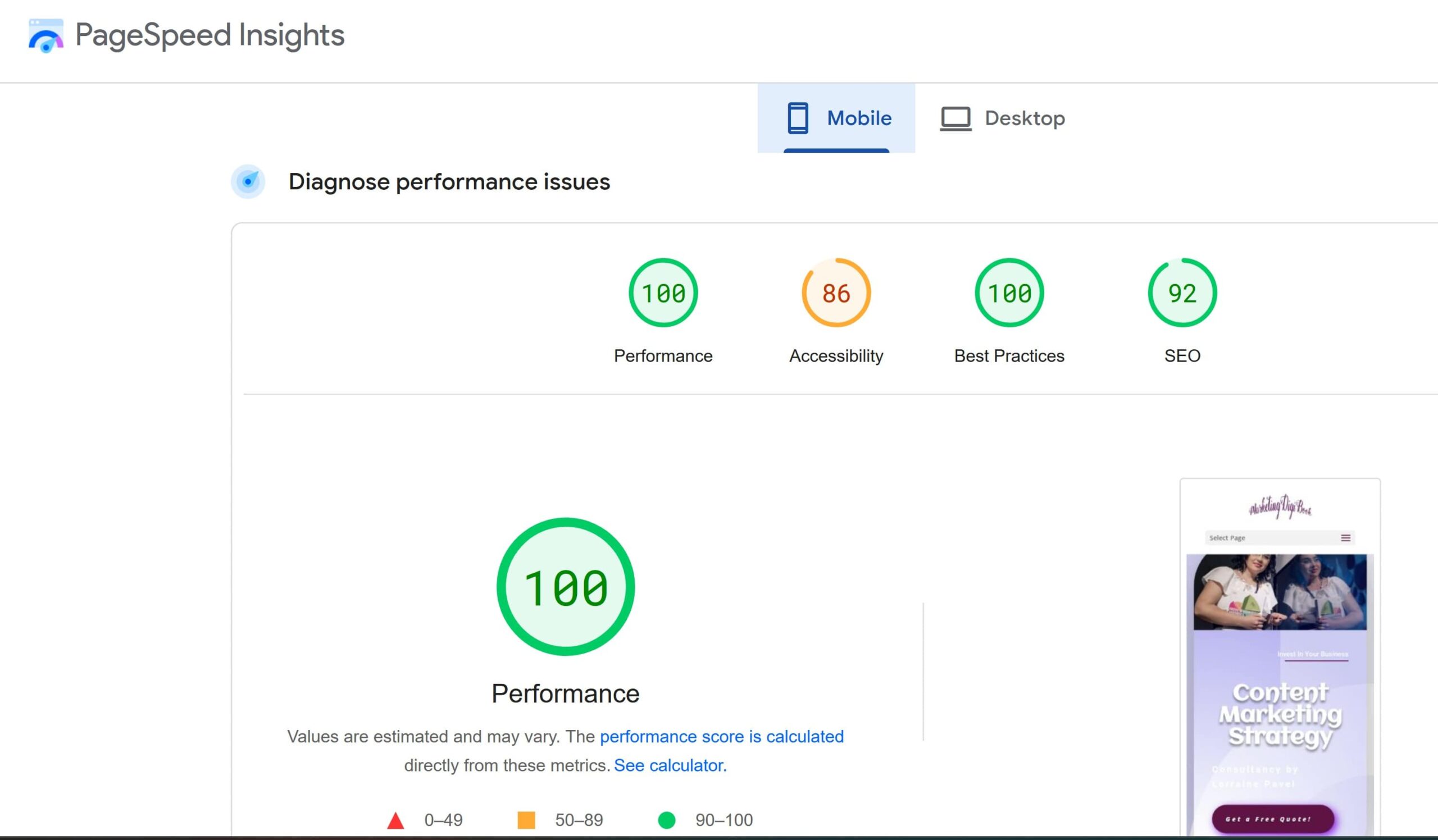
15. Avoid Broken Links and HTML Errors
Since search engines consider usability a ranking factor, multiple broken links reduce the value and quality of your site and impact SERP ranking.
Consequently, check regularly on your links and avoid error pages.
Another weakness sign is having HTML and coding errors. They should never appear on your site.
For simplification, the quintessence of on-page SEO techniques is outlined in the following “On-Page SEO Checklist” under the form of an infographic.
